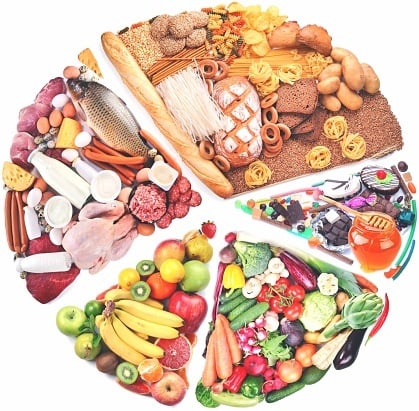 Every five years, the USDA releases new Dietary Guidelines for Americans. Typically people get their idea of what healthy eating is and what they should be doing from all kinds of sources. Maybe it’s from a magazine, a TV news report, something a friend or family member suggested, or from reading blogs. Wherever you get your information, know that a team of researchers put together the most recent scientific evidence to come up with their recommendations for Americans. Here’s what they found, with some of the most important takeaway tips.
Every five years, the USDA releases new Dietary Guidelines for Americans. Typically people get their idea of what healthy eating is and what they should be doing from all kinds of sources. Maybe it’s from a magazine, a TV news report, something a friend or family member suggested, or from reading blogs. Wherever you get your information, know that a team of researchers put together the most recent scientific evidence to come up with their recommendations for Americans. Here’s what they found, with some of the most important takeaway tips.
Strive for a Balance Over Your Lifespan
The current guidelines shift away from recommending foods you should or shouldn’t eat, and instead emphasize the importance of a balanced overall eating pattern. Here are the specific recommendations:
- Follow a healthy eating pattern across the lifespan. Eating patterns are the combination of foods and drinks that a person eats over time.
- Focus on variety, nutrient-dense foods, and amount.
- Limit calories from added sugars and saturated fats, and reduce sodium intake.
- Shift to healthier food and beverage choices.
- Support healthy eating patterns for all.
Watch Sugar, Fat, and Sodium Intake
The new guidelines also put a cap on sugar, saturated fat, and sodium that can lead to heart disease and obesity, and are easy to overeat. The limits are as follow:
- Less than 10% of calories per day from added sugars.
- Less than 10% of calories per day from saturated fats.
- Less than 2,300 milligrams (mg) per day of sodium for those over age 14.
A couple issues that have arisen after the release of the most recent guidelines is the lack of straightforward numbers for sugar and saturated fat. For example, most people are not aware what 10% of their calories would be from sugar and saturated fat (most sources from sugar are in sodas and juice drinks, and saturated fat is from red meat). Instead, an easier recommendation for the public to follow would be to drink more water instead of sugary drinks, and to eat vegetarian meals two to three times per week instead of red meat.
Moderation Is Key
Overall the new Dietary Guidelines for Americans are a helpful tool in reinforcing what we already know: a balanced diet with all of the food groups in moderation is the best one to follow.
If you need help planning your meals or knowing what to eat, consider a personal nutrition coaching session with our Resident Nutritionist, Lindsey Recker by email or by phone at 317.274.3432
ext 239.
This blog was written by Angie Scheetz, RD, Wellness Coordinator. To find out more about the NIFS bloggers, click here.


 If you have read the news lately, I’m sure you have seen that the world’s obesity epidemic is most recently being blamed on sugar. This is with good reason, too. In 1922 the average American ate the amount of sugar found in one 12-ounce soda every five days. Now, that amount is consumed every seven hours. Sugar is in everything—not just baked goods and
If you have read the news lately, I’m sure you have seen that the world’s obesity epidemic is most recently being blamed on sugar. This is with good reason, too. In 1922 the average American ate the amount of sugar found in one 12-ounce soda every five days. Now, that amount is consumed every seven hours. Sugar is in everything—not just baked goods and 